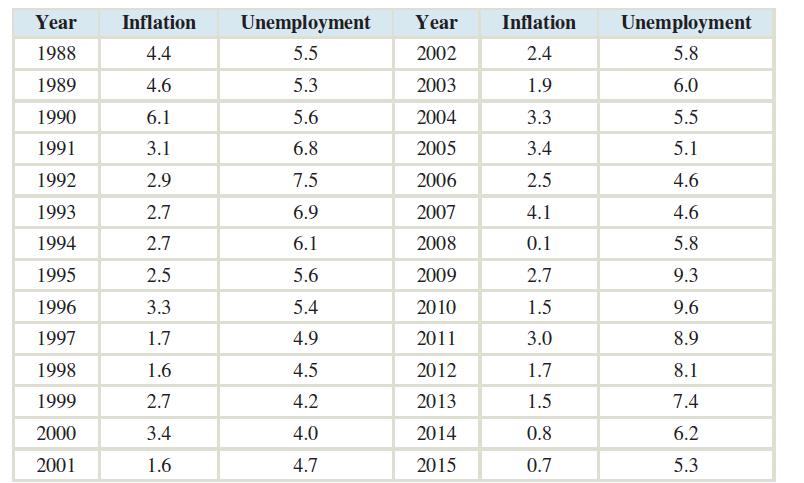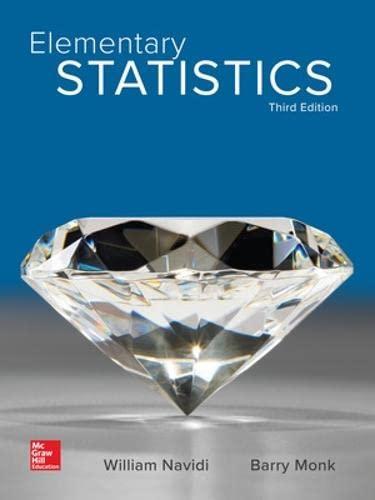1.The following table, reproduced from the chapter introduction, presents the inflation rate and unemployment rate, both in...
Question:
1. The following table, reproduced from the chapter introduction, presents the inflation rate and unemployment rate, both in percent, for the years 1988–2015.
We will investigate some methods for predicting unemployment. First, we will try to predict the unemployment rate from the inflation rate.
1. Construct a scatterplot of unemployment (y) versus inflation (x). Do you detect any strong nonlinearity?
2. Compute the least-squares line for predicting unemployment from inflation.
3. Predict the unemployment in a year when inflation is 3.0%.
4. Compute the correlation coefficient between inflation and unemployment.
5. What proportion of the variance in unemployment is explained by inflation?
The relationship between inflation and unemployment is not very strong. However, if we are interested in predicting unemployment, we would probably want to predict next year’s unemployment from this year’s inflation. We can construct an equation to do this by matching each year’s inflation with the next year’s unemployment, as shown in the following table.
6. Compute the least-squares line for predicting next year’s unemployment from this year’s inflation.
7. Predict next year’s unemployment if this year’s inflation is 3.0%.
8. Compute the correlation coefficient between this year’s inflation and next year’s unemployment.
9. What proportion of the variance in next year’s unemployment is explained by this year’s inflation?
If we are going to use data from this year to predict unemployment next year, why not use this year’s unemployment to predict next year’s unemployment? A model like this, in which previous values of a variable are used to predict future values of the same variable, is called an autoregressive model. The following table presents the data needed to fit this model.
10. Compute the least-squares line for predicting next year’s unemployment from this year’s unemployment.
11. Predict next year’s unemployment if this year’s unemployment is 5.0%.
12. Compute the correlation coefficient between this year’s unemployment and next year’s unemployment.
13. What proportion of the variance in next year’s unemployment is explained by this year’s unemployment?
14. Which of the three models do you think provides the best prediction of unemployment, the one using inflation in the same year, the one using inflation in the previous year, or the one using unemployment in the previous year? Explain.
15. The U.S. economy was in recession during parts of 1990 and 1991, most of 2001, and from December 2007 through June 2009. Compute the residuals for the least-squares line found in Exercise 10. During times of recession, does the leastsquares line predict the following year’s unemployment well? Does it tend to overpredict or underpredict?
Step by Step Answer:






